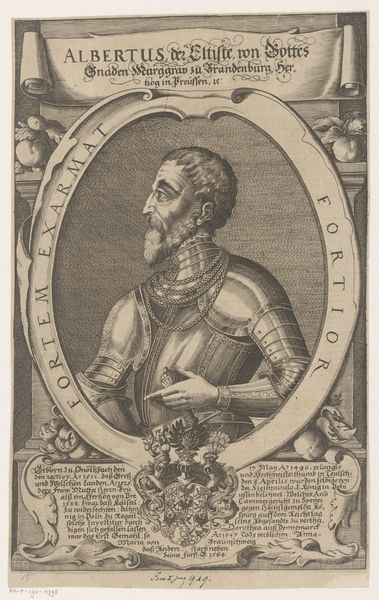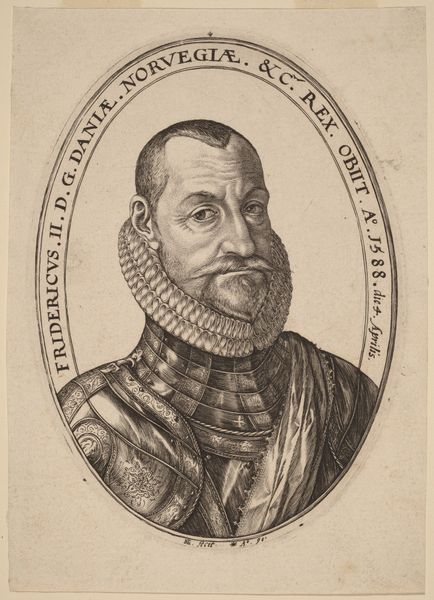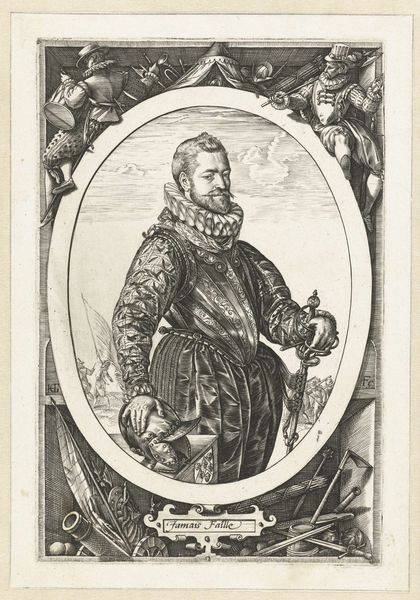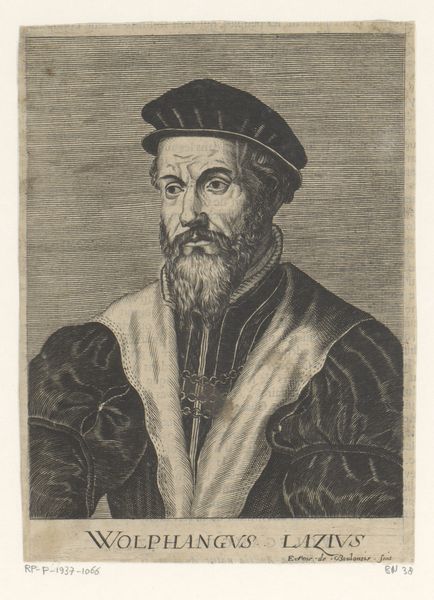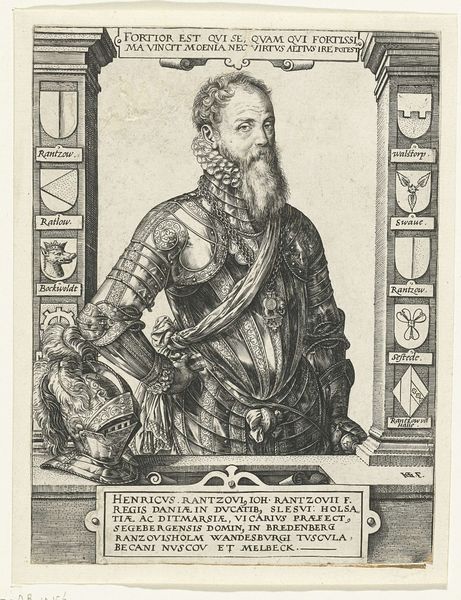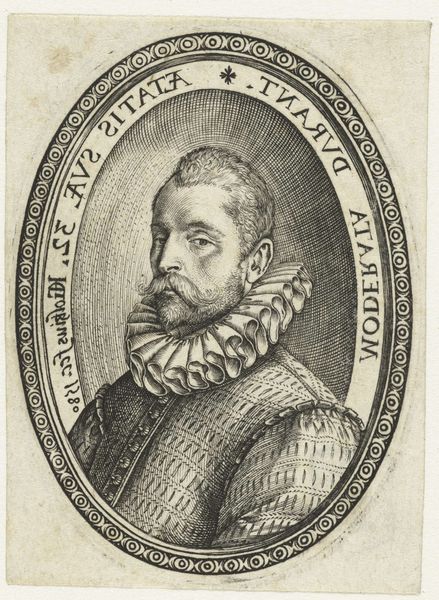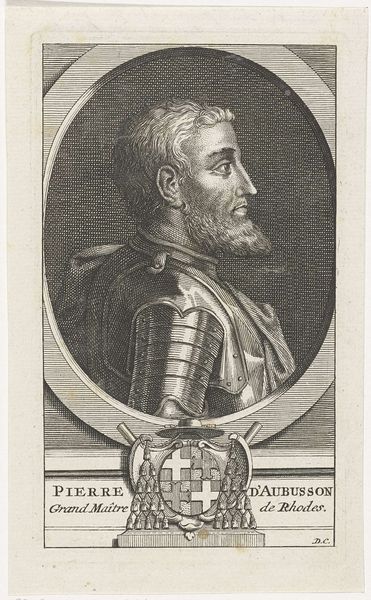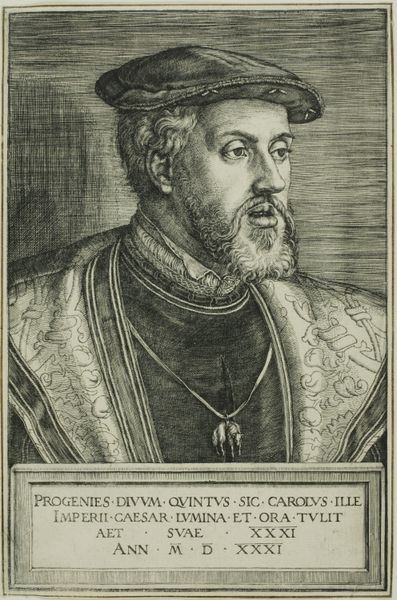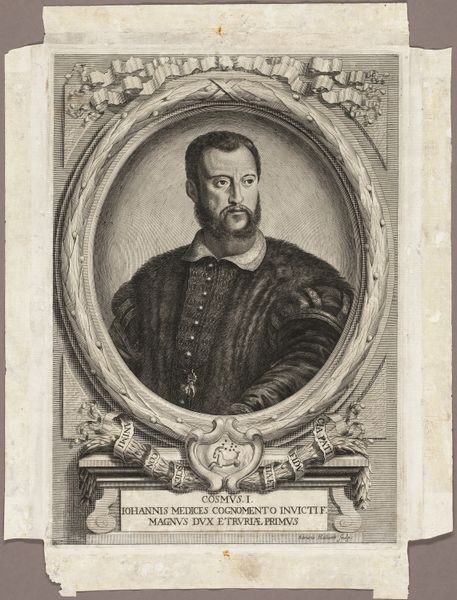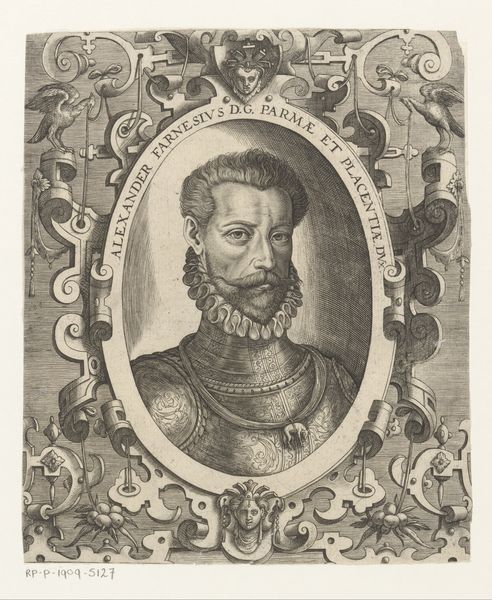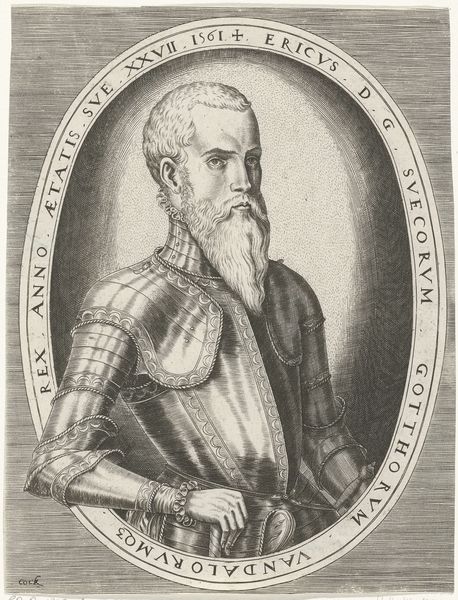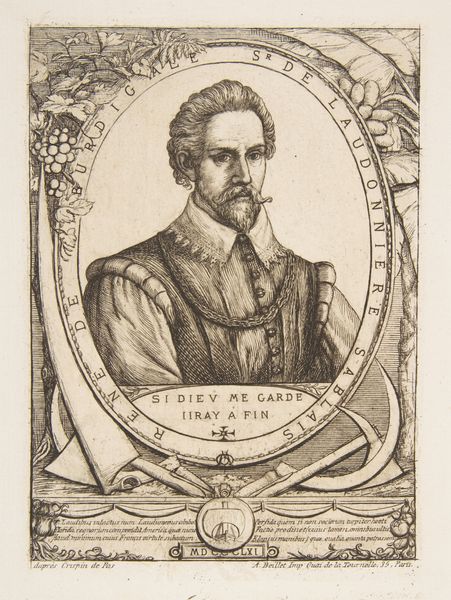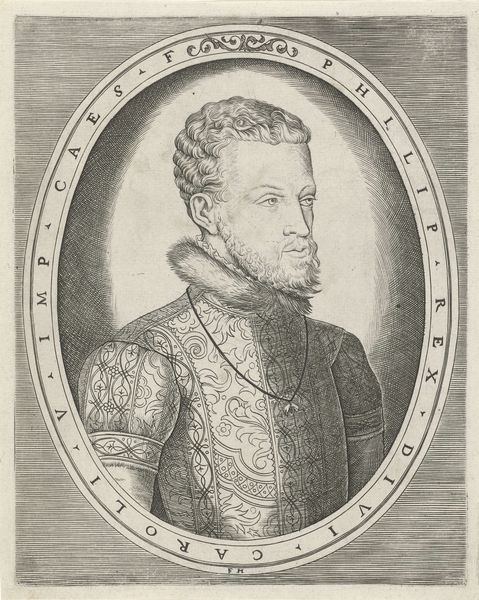
print, engraving
#
portrait
#
baroque
#
dutch-golden-age
# print
#
figuration
#
line
#
engraving
Dimensions: height 158 mm, width 124 mm
Copyright: Rijks Museum: Open Domain
Curator: Let's turn our attention to "Portret van Henri met de Bles" by Hendrick Hondius I. It was likely created sometime between 1610 and 1618, a print dating from the Dutch Golden Age. Editor: My immediate thought is that the texture achieved through line engraving is remarkable. You can almost feel the weight of his garments. But, what strikes me is the somewhat melancholy mood, especially considering that it's a celebratory portrait of a fellow artist. Curator: That sense of gravity is characteristic of portraiture from that period, but the fact that this image was intended to circulate more widely adds an interesting layer. Consider the engraving medium—a relatively reproducible format—along with the inscription below the portrait proudly stating, "Henrico Blesio, Bovinati, Pictori" indicating this was deliberately displayed in a context of other artworks in printed matter. It solidifies Bles’ status as a respected painter. Editor: Precisely. It elevates Bles, but also invites questions about the function of this depiction within a broader visual culture and socio-political discourse. Beyond merely documenting the painter, this rendering contributes to how painters were viewed within their respective contexts, specifically addressing class and power relations of that era. Even something like his lavish jacquard doublet acts to signal status and social roles. Curator: Hondius also included landscape details in the background and the owl in the window opening. Both elements play into establishing Bles as a landscapist—that owl being his well-known signature. It's not just a portrait of an individual, but a presentation of identity linked to profession. Editor: Yes, and even that background landscape functions in this printed format by asserting Bles as an active participant in creating the Northern Renaissance landscape, giving authority to both his work and the genre itself. In doing so, Hondius and Bles mutually affirm a Northern cultural legacy—one distinct from the traditions found south of the Alps. Curator: The choice of engraving itself serves as a claim to the seriousness of printmaking in artistic representation. The proliferation of these images is no less significant than painted portraits displayed within elite homes and royal collections. Editor: Examining “Portret van Henri met de Bles,” and recognizing the details within, has certainly given me fresh perspectives on its role and societal impact, despite the years separating our moment from the era of Hondius. Curator: Absolutely; I, too, see nuances in its significance. The portrait provides fertile ground to further discuss both artistic standing and the mechanisms of cultural production of the period.
Comments
No comments
Be the first to comment and join the conversation on the ultimate creative platform.

